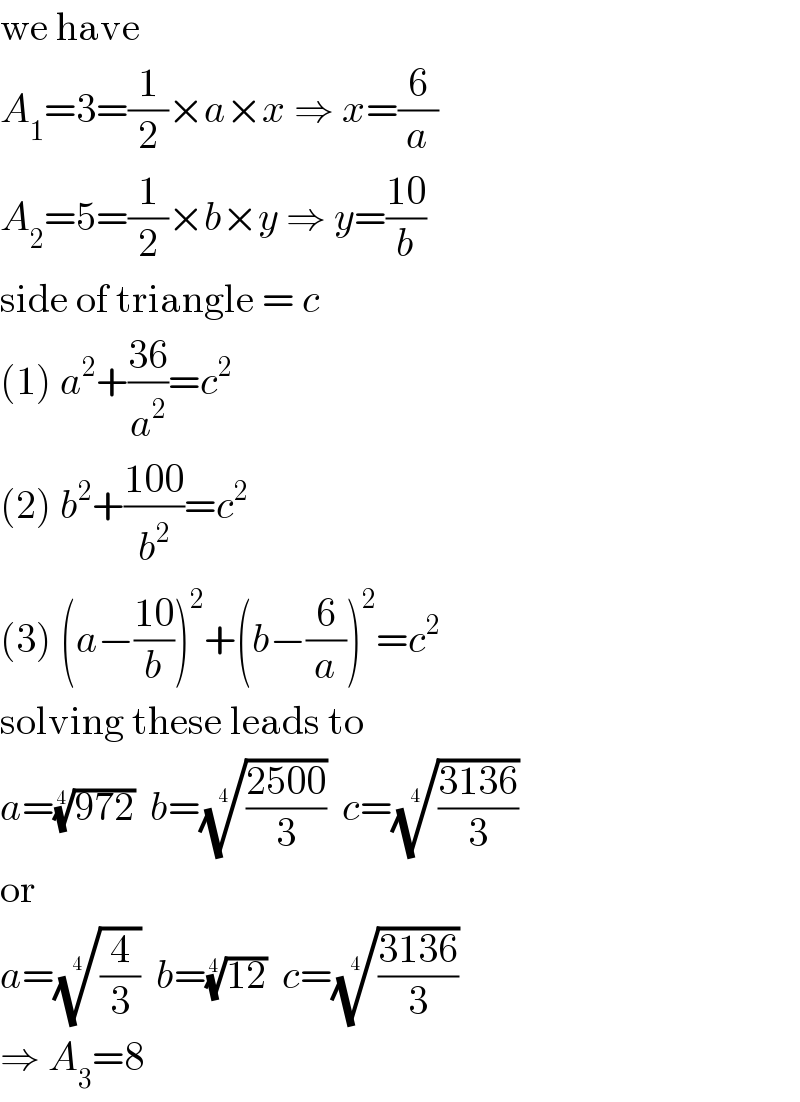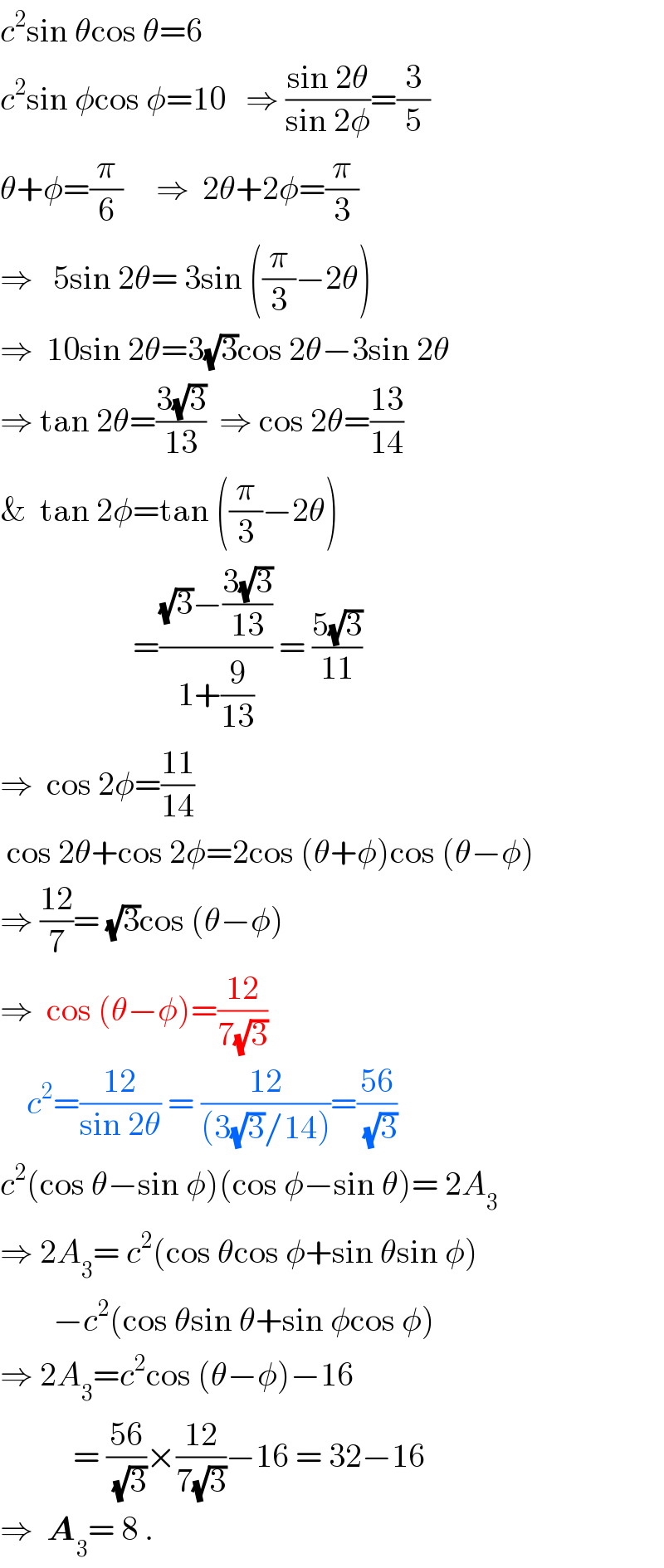
Question and Answers Forum
Question Number 62289 by naka3546 last updated on 19/Jun/19

Answered by MJS last updated on 19/Jun/19

Commented by MJS last updated on 19/Jun/19

Commented by mr W last updated on 19/Jun/19

Answered by mr W last updated on 19/Jun/19

Commented by mr W last updated on 19/Jun/19

Commented by Tony Lin last updated on 20/Jun/19
![2(A_1 +A_2 )=c^2 sinθcosθ+c^2 sin((π/6)−θ)cos((π/6)−θ) =(1/2)c^2 [sin2θ+sin((π/3)−2θ)] =(1/2)c^2 (((√3)/2)cos2θ+(1/2)sin2θ) =(1/2)c^2 sin((π/3)+2θ) =c^2 cos((π/6)+θ)sin((π/6)+θ) =2A_3](Q62364.png)
Answered by ajfour last updated on 19/Jun/19

Commented by ajfour last updated on 19/Jun/19

